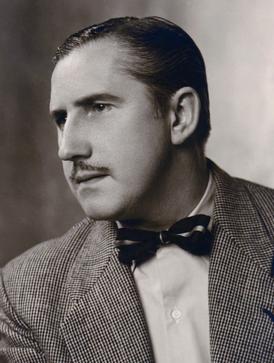Bandes dessinées, abbreviated BDs and also referred to as Franco-Belgian comics, are comics that are usually originally in French and created for readership in France and Belgium. These countries have a long tradition in comics, separate from that of English-language comics. Belgium is a mostly bilingual country, and comics originally in Dutch are culturally a part of the world of bandes dessinées, even if the translation from French to Dutch far outweighs the other direction.

Jean, knight Van Hamme is a Belgian novelist and comic book writer. He has written scripts for a number of Belgian/French comic series, including Histoire sans héros, Thorgal, XIII and Largo Winch.

Edgard Félix Pierre Jacobs, better known under his pen name Edgar P. Jacobs, was a Belgian comic book creator, born in Brussels, Belgium. He was one of the founding fathers of the Franco-Belgian comics movement, through his collaborations with Hergé and the graphic novel series that made him famous, Blake and Mortimer.

Blake and Mortimer is a Belgian comics series created by the writer and comics artist Edgar P. Jacobs. It was one of the first series to appear in the Franco-Belgian comics magazine Tintin in 1946, and was subsequently published in book form by Le Lombard.

Clifton is a Franco-Belgian comics series in the humorous spy-genre, featuring the exploits of Colonel Sir Harold Wilberforce Clifton. It was created by Raymond Macherot in 1959, and has since passed on to other artists and writers. Over the fifty years of publication of the Clifton series, approximately twenty albums and twenty smaller stories have been published, totalling about 800 pages.

Cubitus is a Franco-Belgian comics series, and the basis for the Wowser cartoon series appearing in the United States. Cubitus was created by the Belgian cartoonist Dupa, and features Cubitus, a large anthropomorphic dog, who lives with his owner Semaphore. Cubitus is known as Dommel in Flanders and the Netherlands, Muppelo or Pom Pom in Finland, Teodoro in Italy, Zıpır in Turkey and Доммель in Russia. His name derives from the old anatomical name of the ulna bone, supposedly derived from the Greek kybiton (elbow).

Oumpah-pah le Peau-Rouge is a comics series created by comics artist Albert Uderzo and comics author René Goscinny, best known as the creators of Asterix. The series first appeared in the weekly Tintin magazine in 1958 though it remained serialised for a relatively short time, ending in 1962. The stories were published in book form by Lombard and Dargaud starting in 1961. In 1995, the series was reissued by Albert Uderzo's own publishing house, Les Éditions Albert-René.

Société Dargaud, doing business as Les Éditions Dargaud, is a publisher of Franco-Belgian comics series, headquartered in the 18th arrondissement of Paris. It was founded in 1936 by Georges Dargaud, publishing its first comics in 1943.
William van Cutsem, better known by his pen name William Vance, was a Belgian comics artist known for his distinctive realistic style and work in Franco-Belgian comics.
Luc Orient is a Belgian science fiction comic series featuring an eponymous hero, created in 1967 by the writer Greg and the artist Eddy Paape. It belongs to the large family of Franco-Belgian comics.
Michel Régnier, best known by his pseudonym Greg, was a Belgian cartoonist best known for Achille Talon, and later became editor of Tintin magazine.
Edouard Paape, commonly known as Eddy Paape, was a Belgian comics artist best known for illustrating the series Luc Orient.

Barelli is a comics series featuring an eponymous character, created by Bob de Moor, which first appeared in the Franco-Belgian comics magazine Tintin on July 27, 1950. Barelli made sporadic serial runs throughout the 1950s, 1960s and 1970s while 8 albums in the series were released by Lombard and Bédescope.
Philémon is a series in the Franco-Belgian comics style created by French artist Fred and published by Dargaud. The series began serial publication in the French magazine Pilote on July 22, 1965, before it eventually became an album series. The general tone of the series is of fantastic realism, depicting the adventures of the young farmboy Philémon in surreal adventures featuring odd creatures in odd places, and it is considered one of the most poetic and original bande dessinée series of all time.

Paul Cuvelier was a Belgian comics artist best known for the comic series Corentin, published by Le Lombard, which first appeared in the first issue of Tintin magazine.

Les Aventures de Tanguy et Laverdure is a Franco-Belgian comics series created by Jean-Michel Charlier and Albert Uderzo, about the two pilots Michel Tanguy and Ernest Laverdure, and their adventures in the French Air Force.

Ric Hochet is a Franco-Belgian comics series created by Tibet (drawings) and André-Paul Duchâteau (scripts). It first appeared on March 30, 1955, in the Franco-Belgian comics magazine Tintin.

Tibet, the pseudonym of Gilbert Gascard, was a French cartoonist in the Franco-Belgian comics tradition. Tibet, who debuted in 1947, is known for work produced for the Franco-Belgian comics magazine Tintin, most notably the long-running series Ric Hochet and Chick Bill.

Bob de Moor is the pen name of Robert Frans Marie De Moor, a Belgian comics creator. Chiefly noted as an artist, he is considered an early master of the Ligne claire style. He wrote and drew several comics series on his own, but also collaborated with Hergé on several volumes of The Adventures of Tintin. He completed the unfinished story Professor Sató's Three Formulae, Volume 2: Mortimer vs. Mortimer of the Blake and Mortimer series, after the death of the author Edgar P. Jacobs.

Bob Morane is a Belgian comics series that was created by Henri Vernes and Dino Attanasio, it was published from May 21, 1959, in the Belgian weekly magazine Femmes d’Aujourd’hui and published in graphic novel form from 1960 to 2012 by Belgian publisher Marabout.















